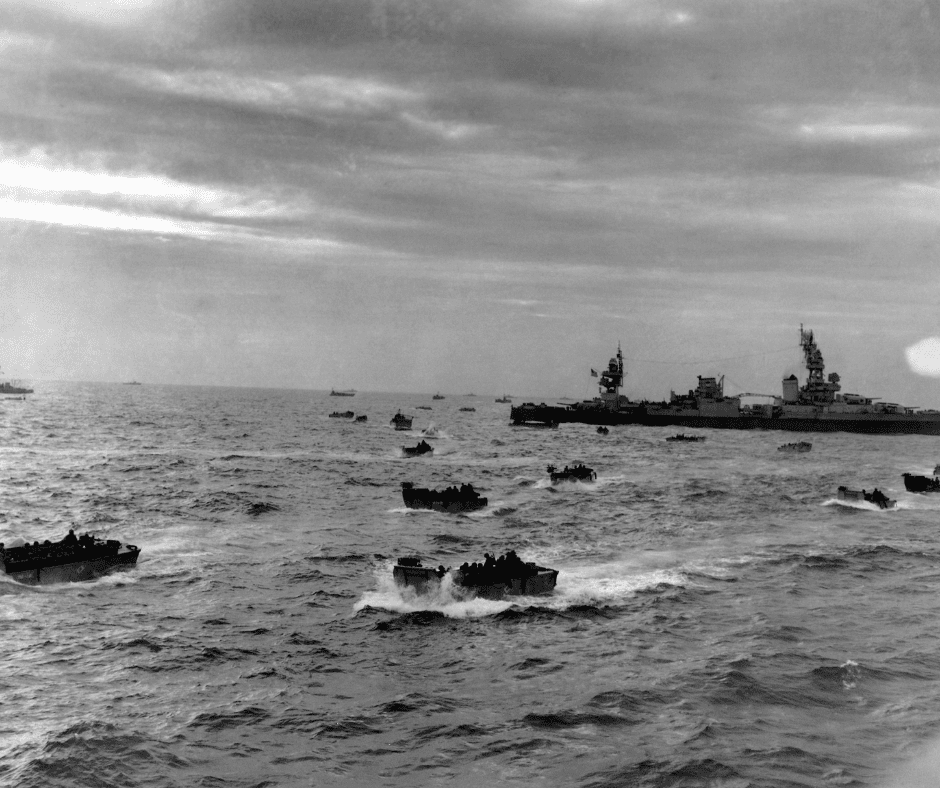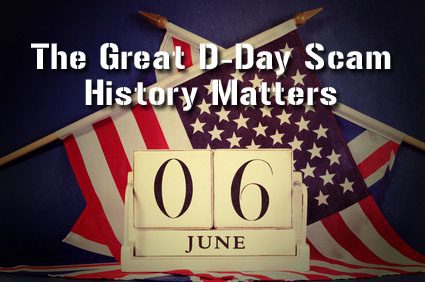June 6, 1944: The Great D-Day Scam

On June 6, 1944, 150,000 Allied troops embarked on the most significant amphibious invasion in warfare. We all know about D-Day and the invasion of Normandy, but there is a backstory: it was one of the most significant military rope-a-dopes ever. About a million German troops waited at the wrong place while the Allies established a beachhead and began their relentless drive to the heart of the Third Reich.

It was no secret that the Allies were preparing to invade the European mainland through the northern European coast. The pre-invasion buildup was enormous, as southern England became a vast military encampment.
English ports were filled with transports, airfields were stacked with military aircraft, and tanks, trucks, jeeps, and billeted troops were everywhere. In fact, by early June 1944, nearly three million Allied servicemen were ready for an assault on Nazi-occupied Europe.
Such monumental preparations could not have escaped German intelligence. Again, everyone knew the invasion was imminent. However, the Germans were unaware of the when and where, and these unknowns remained essential to the success and surprise that the Allies ultimately pulled off before the Germans could blunt the attack.
The Allies devised several careful deception plans:
Even disgraced General George Patton was recalled to active service after his infamous soldier-slapping incident. Patton stood by in southern England as a decoy, distracting German attention from the invasion plans. (Hitler still couldn’t believe the Americans would take a fighting general off the line for whacking an enlisted man.)
Luck and chance also delayed the German reaction to the Allied invasion of Normandy. General Erwin Rommel, who was in charge of German defenses against the attack, decided that the Allies were not yet ready.
He drove back to Germany on June 4 to celebrate his wife’s birthday. As a result, Rommel would be 24 hours late in getting back to the front and commanding an effective and immediate response.
As for Hitler, on the morning of D-Day, the Fuhrer was fast asleep at his headquarters, dopey with barbiturates; none of his staff thought it wise to wake him. In fact, by the time the rest of the Germans awoke and realized that Normandy was at the main thrust of the Allied operation, established beachheads, and the first stages of the end of the Third Reich had begun.
There is still no exact figure of how many patriots lost their lives on D-Day.
The U.S. Army Center of Military History in Washington, D.C., numbers 6,036 American casualties, including wounded and missing. The Heritage Foundation in Washington estimates 4,900 dead. Historians say a definitive death toll will likely never be known. Even now, the Normandy soil for which soldiers fought so bitterly offers up new bodies…
So, as our greatest generation of World War II veterans is diminished by one more passing year, let’s pause today to remember and vow to never forget their efforts and sacrifice in further securing liberty and freedom.
Remember them with pride and share this story so that others do not forget their bravery and patriotism.
